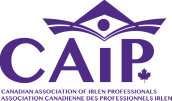Information for other professionals
|
Information for Educators
The brain, learning, and Irlen Syndrome
In light of the latest scientific evidence, it becomes clear that the negative effect of Irlen Syndrome on the learner goes beyond reading. In fact, this dysfunction will affect planning, attention, focus and concentration, all consequences of the hyperactivation of the visual cortex. In some cases, a significant improvement of the behavior can be observed with the use of Irlen Spectral Filters. Not to be forgotten is the fatigue that accompanies this syndrome, especially as the day progresses. Common manifestations of Irlen Syndrome A more frequent manifestation of Irlen Syndrome is the apparition of visual distortions that occur as soon as visual fatigue sets in. This can occur after half an hour, but in some severe cases it can happen within a few words. These distortions will limit the access to the written text, will reduce the reading rate, and the recall of the text. Another manifestation is the reduction of the visual span. By visual span, we mean the width of the vision where words can be read without having to move the eye from spot to spot on a page. In the case of many adults, this span may include two or three words, whereas in the case of an Irlen sufferer, the person will only see a few letters if he or she does not move their eyes. It is then easy to imagine how this difficulty, combined with viual distortions, will make copying from the board very difficult and laborious. It is also easy to understand how these same factors will negatively affect handwriting, especially when the blue lines of a scribbler become hard to perceive. It is also easy to gather why someone will easily lose their place on a page. Finally, with the added fatigue of the school day, the homework period will often be marked by procrastination, delaying tactics and crises. This is typically made worse by the bright lighting that is usually found over most kitchen tables, especially if the light source is fluorescent (fluocompact light bulbs) as are usually found in most classrooms. What about autism? Irlen Spectral Filters will not "cure" autism. However, 84% of all autistic students are also sensitive to light just as they are sensitive to loud noises, strong odors, and being touched. Their light sensitivity is of the same nature as the light sensitivity of an Irlen person, with the expected effects on reading, concentration and focus. The use of Irlen Spectral Filters by the autistic students will help improve their ability to regulate their behavior, as was demonstrated in a recent British study. So what exactly is Irlen Syndrome? Irlen syndrome is not a problem of the eye, but of the brain. Optometric interventions will not resolve Irlen Syndrome just as an intervention aimed at Irlen syndrome will not have any effect of optometric issues. Consequently, Irlen practitioners require that a client pay a visit to an optometrist or ophthalmologist ideally no more than six months prior to an Irlen assessment. There is a substantial body of research that has been accumulated since the 1980s. The efficacy of Irlen Spectral Filters is supported by more than 100 studies led by independent researchers. These scientists published their results in peer-reviewed, respected professional journals in the fields of education, medicine, and psychology. Among those, we can find the Journal of Learning Disabilities, Australian Journal of Special Education, Perceptual and Motor Skills, Australian Journal of Learning Disabilities, Journal of Clinical & Experimental Neuropsychology, Journal of Research in Reading, Behavioral Optometry, and Ophthalmological and Behavioral Optics. A recent review established that of 62 selected studies, 56 had given positive results, 45 noted significant improvement in the case of specific reading skills, 11 gave positive results for optical accommodation, improved eye movements and reduced headaches and migraines. Studies are ongoing in Australia, Italy, Brazil, England, Switzerland, and New Zealand. Key studies presented below are worth mentioning and should elicit professional interest:
|

|
|